The Short Version
Set in the grounds of elegant Northamptonshire country house Kelmarsh Hall, Shambala has a wild atmosphere wherein psychedelic hippy antics meet spliff-lovin’ post-hip hop youth. It’s a great party, with a friendly, high-spirited crowd, offering a niche musical menu, mostly across a range of small, well-crafted venues. Friday night headliner Sister Sledge is great fun but Saturday night headliner Beardyman is, unexpectedly, rubbish. Nevertheless, the whole thing joyfully succeeds, whether in blazing sun or monsoon downpour, due to its vivaciousness, colour and imaginative design.
The Long Version
Friday 26th August
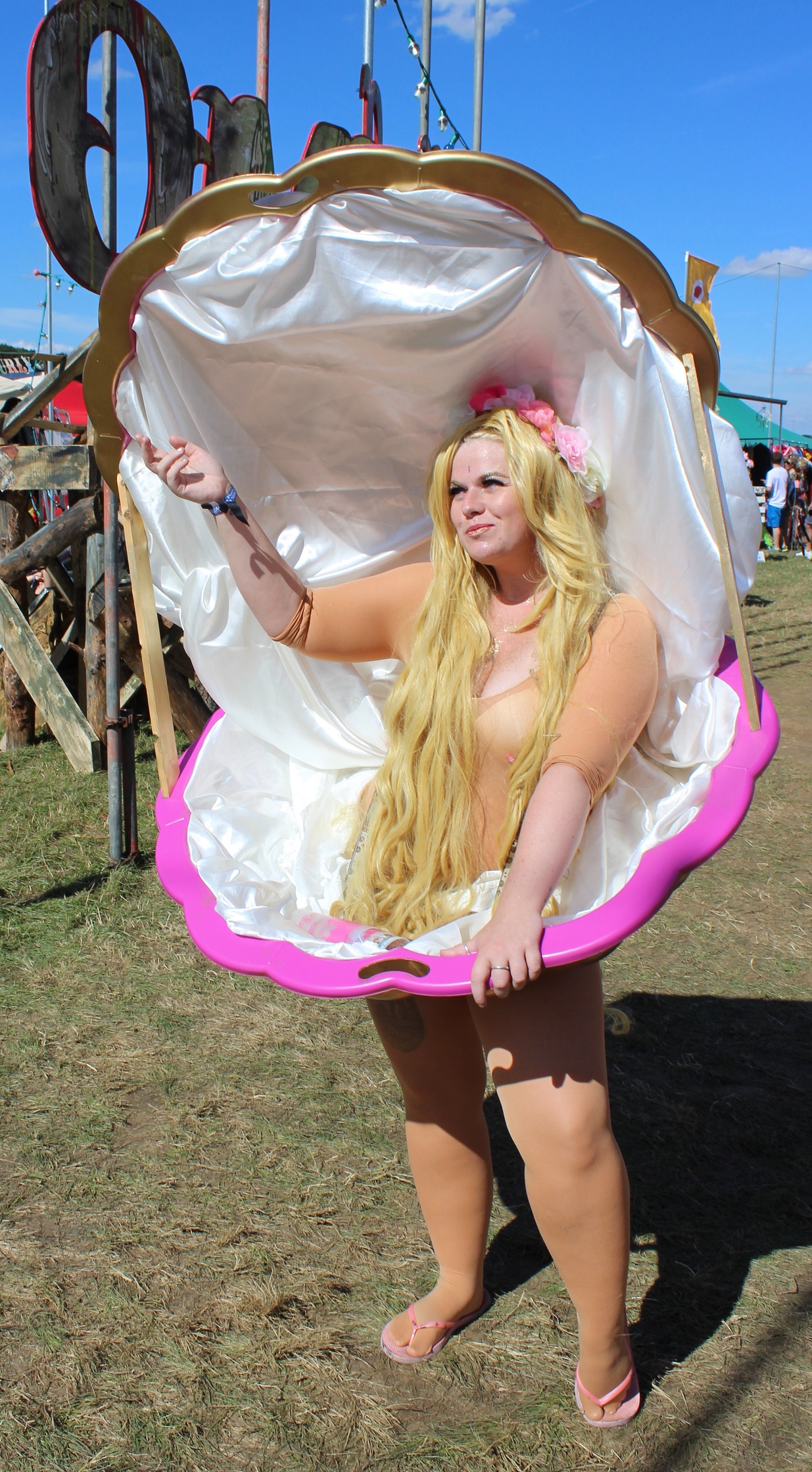
Turns out it’s not Shambala’s hippies I needed to worry about. It’s the aforementioned large group of friends with whom I’ve camped. They all rise at 8.30 AM, after five hours broken sleep, and sit about for hours and hours drinking tea and coffee, many of them talking about how tired, blurry and worn out they feel. Well, then, WHY DON’T YOU GO BACK TO SLEEP AND GET UP LATER?
Their excuse is that the sun is too hot. On this they have a point, the sun blazes down all day Saturday. When I eventually become human again we head onsite, and what a location it is. A gaggle of slowly turning wind turbines in corn fields to the south add a hint of retro sci-fi, while the splendid, red-bricked, eighteenth century Kelmarsh Hall, with its immaculately tailored lawn, overlooks the festival’s main area, also bordered by a small “lake” (really a large decorative pond). On the latter, festival-goers can pay £30 to do floating yoga on paddle-boards, but it’s more fun grabbing an expertly concocted Bloody Mary or Moscow Mule from the nearby Sankofa’s yurt-marquee bar and waiting for one of the amateur yogis to very publically fall in. Someone usually obliges.
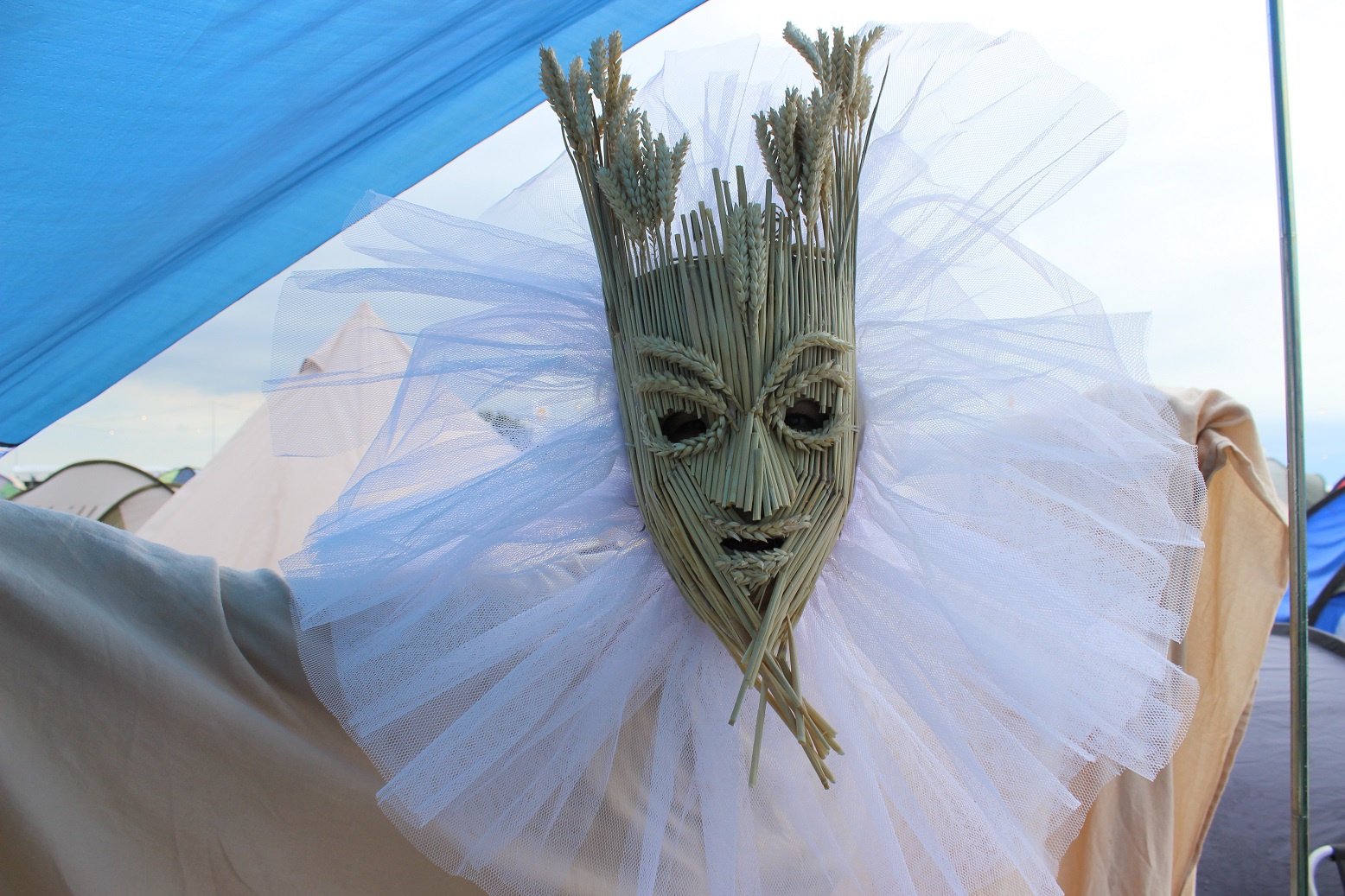
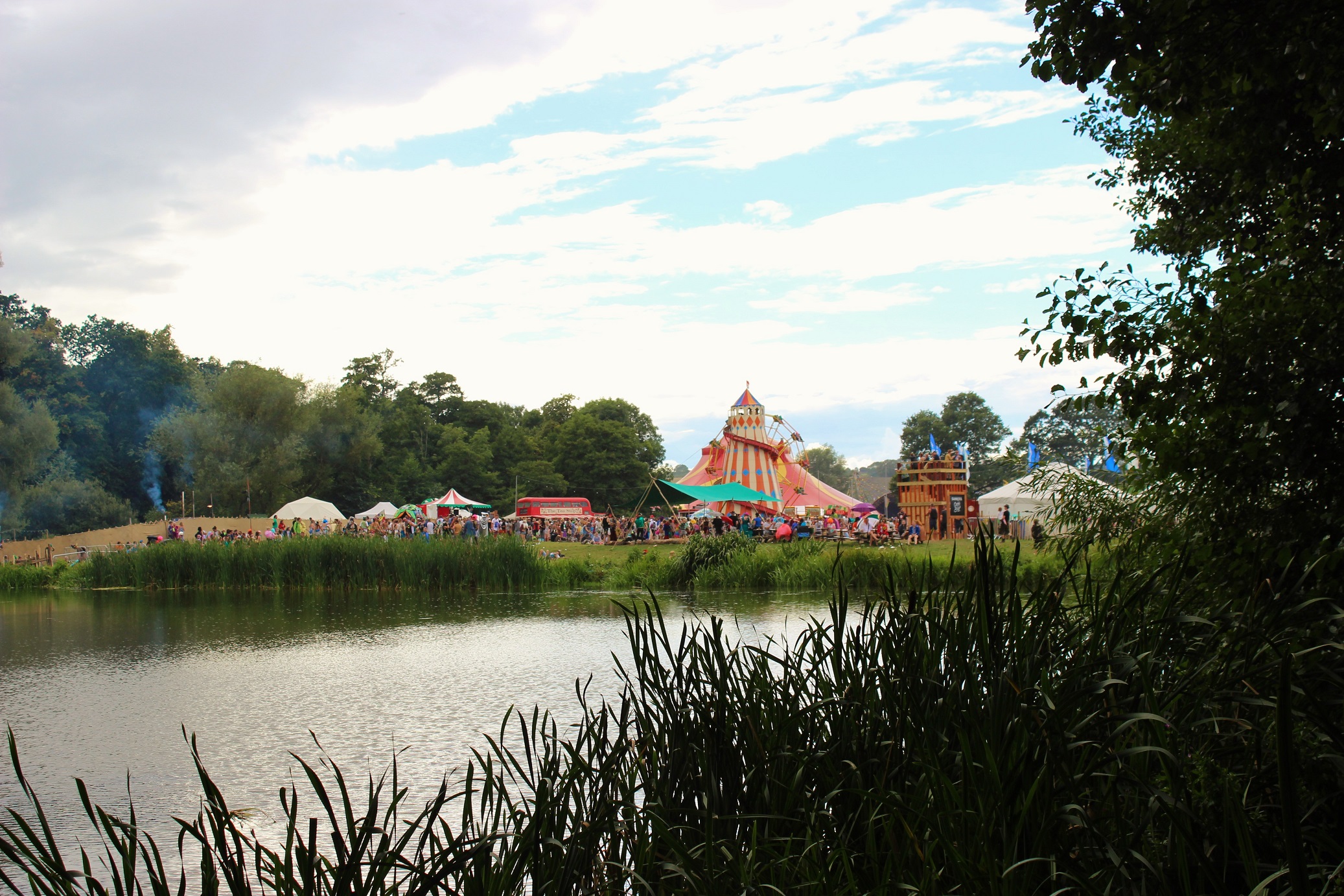
With the exception of Sister Sledge later on, Shambala thrives via a multiplicity of mostly small and intimate venues rather than gathering a mass of its 15,000 attendees in one place. People are more likely to be found doing large choreographed dance classes to the music of Prince, Bowie and Michael Jackson’s Thriller’ or hamming it up at “Carboot Disco Bingo”. Or there’s even the fantastically surreal Womb With a View where those who wish can dress as an egg, go through fallopian tubes, be fertilised by resident sperm, and be birthed back onto the main drag via a gigantic vagina.
In fact, there’s everything from sea shanties to weaving to goat-milking (a friend made an impressive hooked pendant at a blacksmithing workshop), but, from the evidence on offer, the most popular choice is the Nipple Tassel Workshop. As the weekend progresses a significant percentage of young women opt to not bother with the tassels and their glitter-sparkled bare breasts, night and day, become one of Shambala’s emblematic sights.
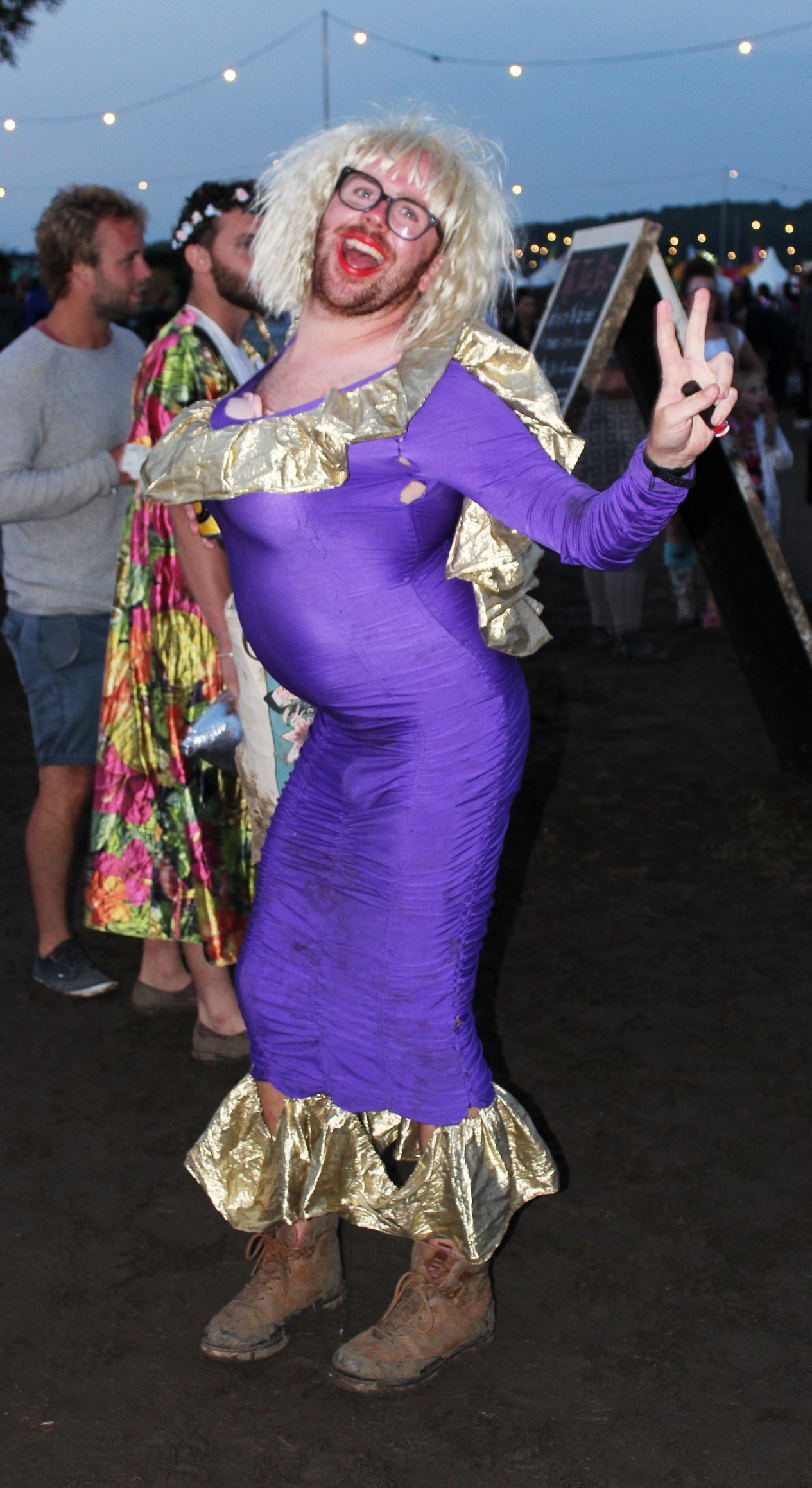
Over in Kamikaze, one of the line-up’s bigger names, the venerable Warp Records Balearic don, Nightmares on Wax, AKA George Evelyn, crouches over consoles in front of a screen featuring giant circles filled with liquid lightshow imagery, his bald dome reflecting them. He’s doing something with laptops in dub that has people moving but is not, in essence, massively exciting.
A bit later I make a special effort to catch The Flamingods on the Chai Wallahs stage. They’re a group led by Bahrainian producer Kamal Rasool whose recent album Majesty hinted at exciting things, mingling global roots music and retro psychedelic touches. In the flesh on this occasion, they’re not as persuasive, delivering a decent jam, featuring much sax, but never fully dragging us off to cosmic heights.
Shambala is a wonderfully high festival. When we go back to the tent, after a bite to eat, we ensure we maintain the correct elevation. I’ll leave it at that. Friday night is a-buzz with anticipation for the festival’s only vintage name and actual once-upon-a-time-hit-makers. The weekend could have done with a sprinkle more, frankly, but Sister Sledge will do for openers. First, while waiting for friends by some wooden benches shaped like apples, I was sucked towards Madam Bayou’s voodoo-themed outdoor stage where a guy with a fedora is playing raunchy blues-rock covers of Johnny Cash and Nick Cave. He’s good and I write down that he’s called Johnny Mystic but later I can find no mention of an act by such a name. I think I have it wrong. Madam Bayou’s line-up, like a number of Shambala’s stages, is not in the programme, only scrawled on a chalkboard outside. So apologies to whoever that was. My brain went Johnny Mystic.
Once our tribe is gathered, we head to Sister Sledge. Dressed in floaty white outfits, the sibling group open with a jazzy take on an obscure cut. “World, Rise & Shine”, which they originally cut with “Bluey” Maunick from pop-jazz crew Incognito in the early Nineties, but before long they’ve dived into their Chic-endorsed 1979 beginnings and have hordes of cross-dressing Shambalans dancing with them onstage. They play not only their own Nile Rodgers/Bernard Edwards disco classics, such as “He’s the Greatest Dancer”, “Thinking of You” and the awesome “Lost in Music”, but also actual Chic songs such as “Good Times”, replete with one Sledge sibling doing the Sugarhill Gang rap from “Rappers’ Delight”.
They have to play their dreadful 1985 chart-topper “Frankie”, a throw-away trifle, but they end, of course, with “We Are Family”. By this time their band, who start off somewhat muddy-sounding, have tightened right up, and the chorus is extended into a piano-led Exile on Main Street/Screamadelica-style gospel jam, replete with adlib lyrics about Shambala, the Shambalan family, all that. Only a churl would not be swept up by it and the evening is theirs.
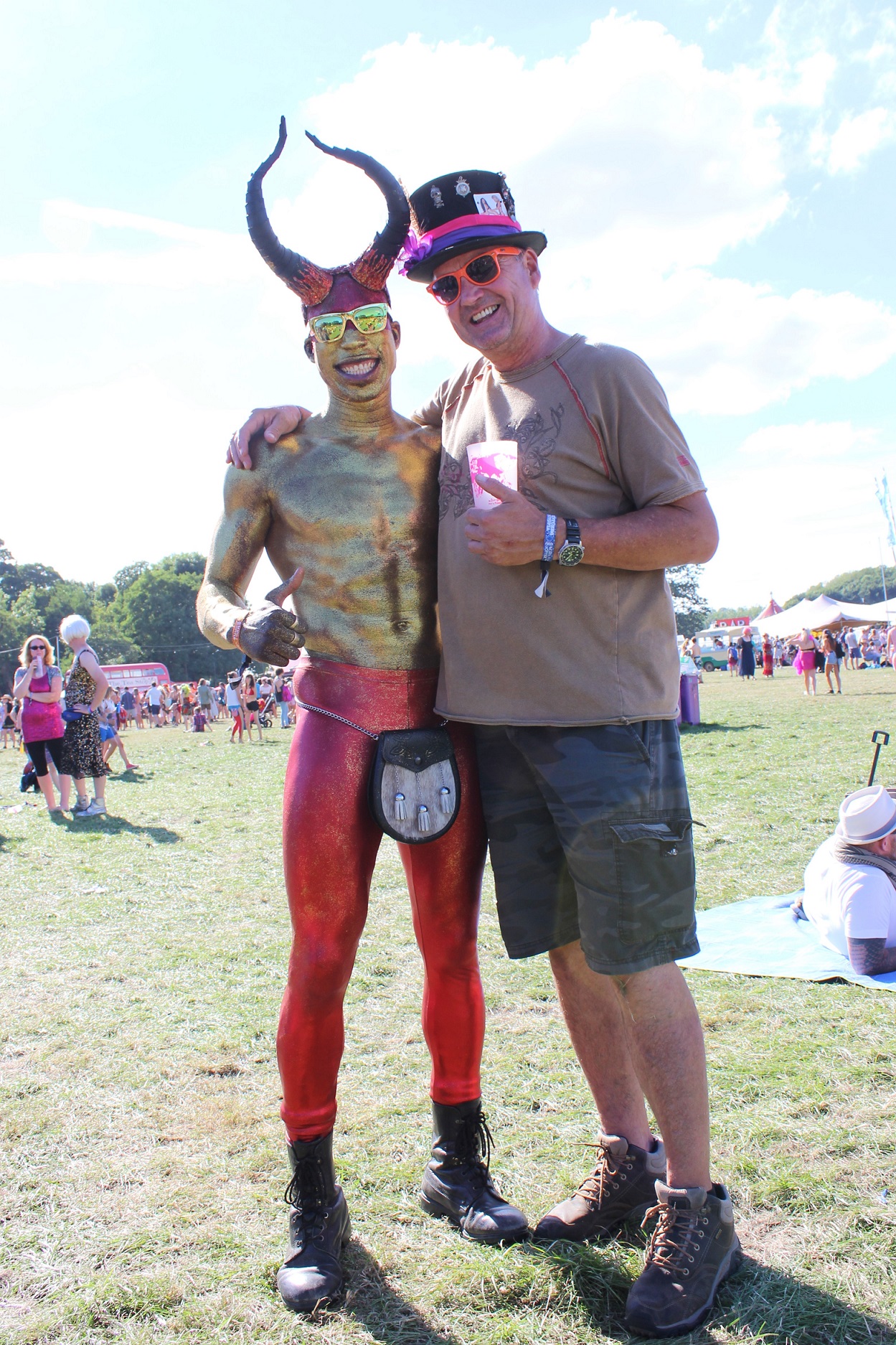
Saturday 27th August
Saturday daytime is dominated by large quantities of water falling from the sky. After a spectacular breakfast of scrambled eggs mixed with all manner of good things, cooked by a Mexican friend, I head for Sankofa’s, buying a smashing, spicy Bloody Mary, replete with celery, and settling in the inner area, a carpeted space where shoes must be taken off. There’s a staged conversation taking place between Shambala co-founder and musical director Dan Raffety and London singer-MC Dizraeli. It’s all a bit back-slappy and blissed out for me, the audience wearing glazed smiles like evangelical Christians, and applauding every time the word “Shambala” is mentioned. It’s the only time my pre-festival fears about cult-ish hippy-dippiness are realised, albeit in a very gentle way, so I head out to the increasingly disgraceful weather.
A good chunk of the next few hours is spent in the Roots Yard, a space shaped a little like a wooden US cavalry outpost from a western, but covered in posters for reggae bands. Once inside there’s a dance hall where Jamaican-flavoured rhythms keep coming on the bass-boosted Biscuit Tin Soundsystem. We sit on nearby benches under a roof, drinking cider and beer, many of our number topping these up with formations of molecules that shall remain nameless.
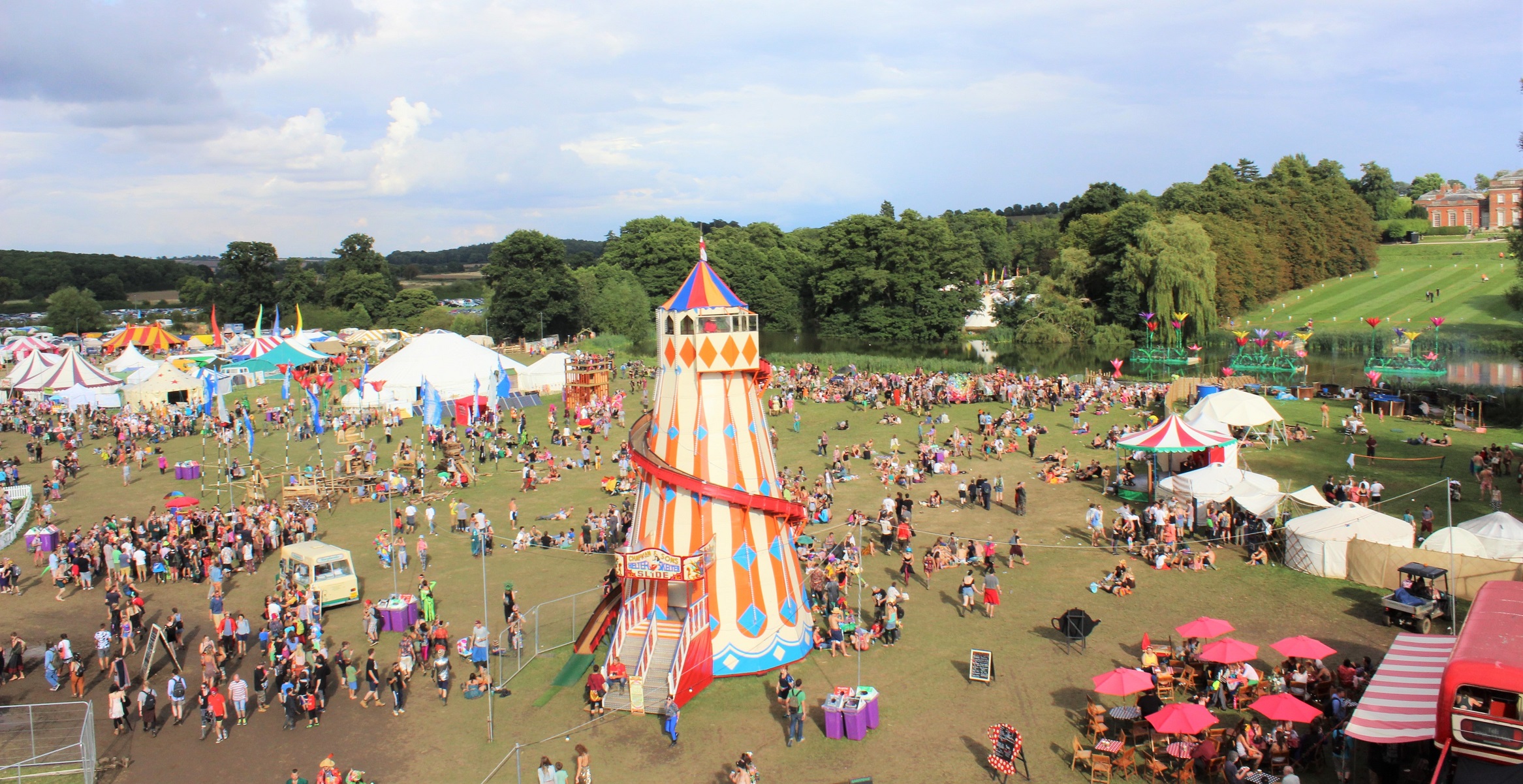
Beardyman is a great act and has been reviewed positively – even ecstatically - by this writer on numerous occasions. However, his Beardyman Dream Team is awful. Preceded on the main stage by Pat Thomas & the Kwashibu Area Band, whose Ghanaian Afro-funk is lively and upbeat, Beardyman takes ages to set up. When he’s ready, 35 minutes late, he suffers a multiplicity of technical issues. I've made matters worse for myself by telling anyone who’ll listen that he’s likely to be the highlight of the entire festival. I even use the word “genius”. Oh dear.
Never mind the technical issues and the lateness, these aren’t the real problems. Instead of diving in with his usual wit and natural flare for entertainment, Beardyman seems caught up in his own fantasy of leading a futurist jam, all virtuosity and technique and no fun. It’s all about him having a good time, not us. He opens with a quick burst of looping and beatboxing but without his usual engaging qualities, then he spends another half hour bringing on band members one by one, like the some tedious prog-jazz act. The likes of Dizraeli, DJ JFB, female beatboxer Bellatrix, session drummer Emre Ramazanoglu, cello-player Rob Lewis, etc, are very good at what they do, but these introductions are laborious and time-wasting. Again, more for them than us. The crowd starts to wander off.
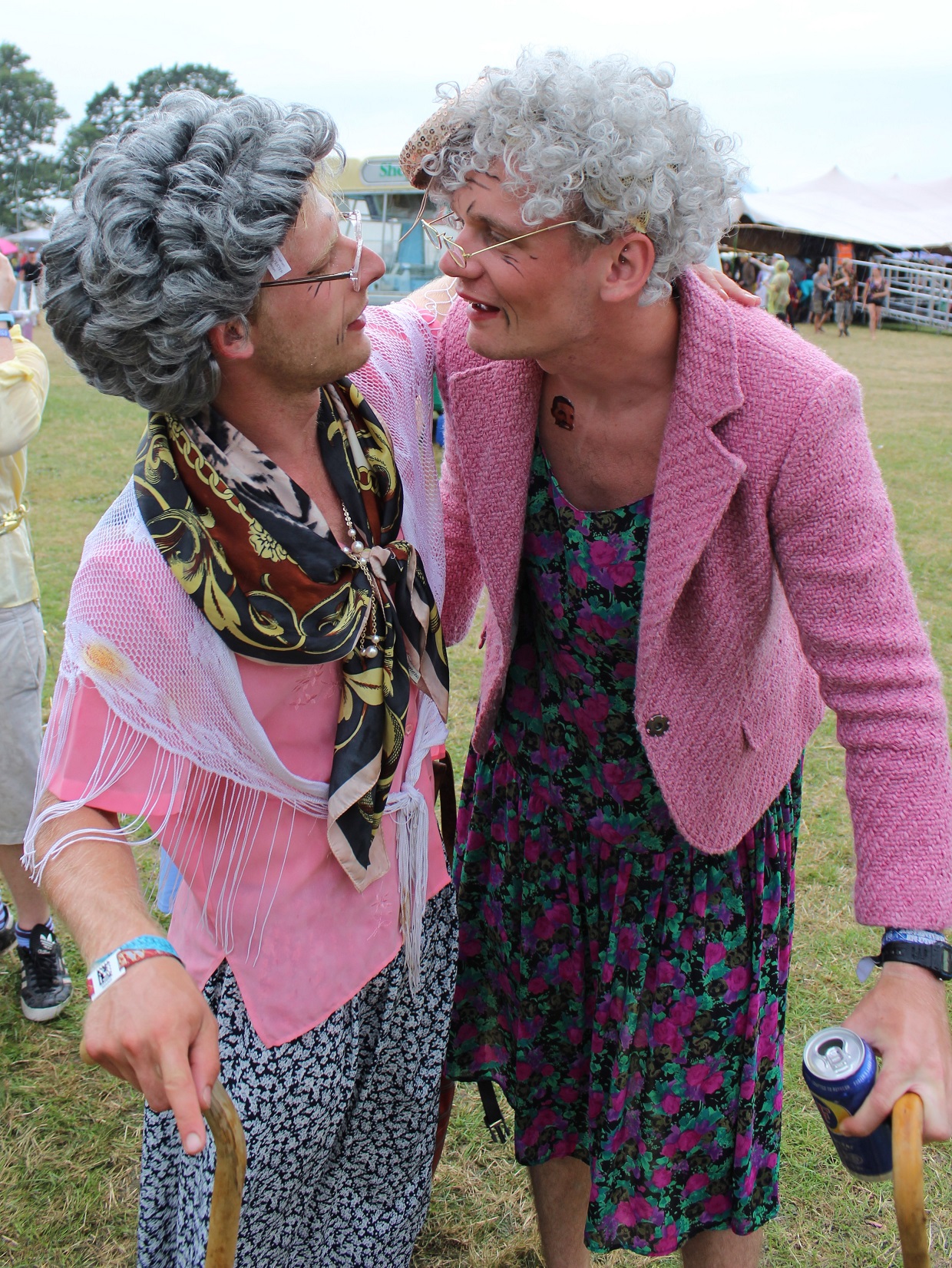
So, Beardyman killed our buzz. We try to get it back with LTJ Bukem’s set at the packed Kamizake. He’s doing a fine job, running a gamut of increasingly rough drum & bass styles, but a few of us simply cannot relocate our vibe so we cut our losses and sit back at the tent drinking red wine and chatting until only 2.30 AM. Lame-ohs! It’s just one of those nights. Sometimes you have to accept defeat gracefully. Beardyman’s Nightmare Team, eh. Pah!
Sunday 28th August
Much of the daytime is spent saying goodbye to multiple friends who have to be back at work Monday morning (or, in one lucky case, heading to Bali for 10 days), and the rest is spent exploring, taking in the Healing Meadow, watching “Penis Jousting” (pictured below left), drinking Sankofa’s cocktails by the lake in watery sunshine, dubbing round in the Roots Garden, eating snacks, and so on, but never really settling with a band, so let’s jump to the early evening where you find me spending time at the wooden apple benches again.
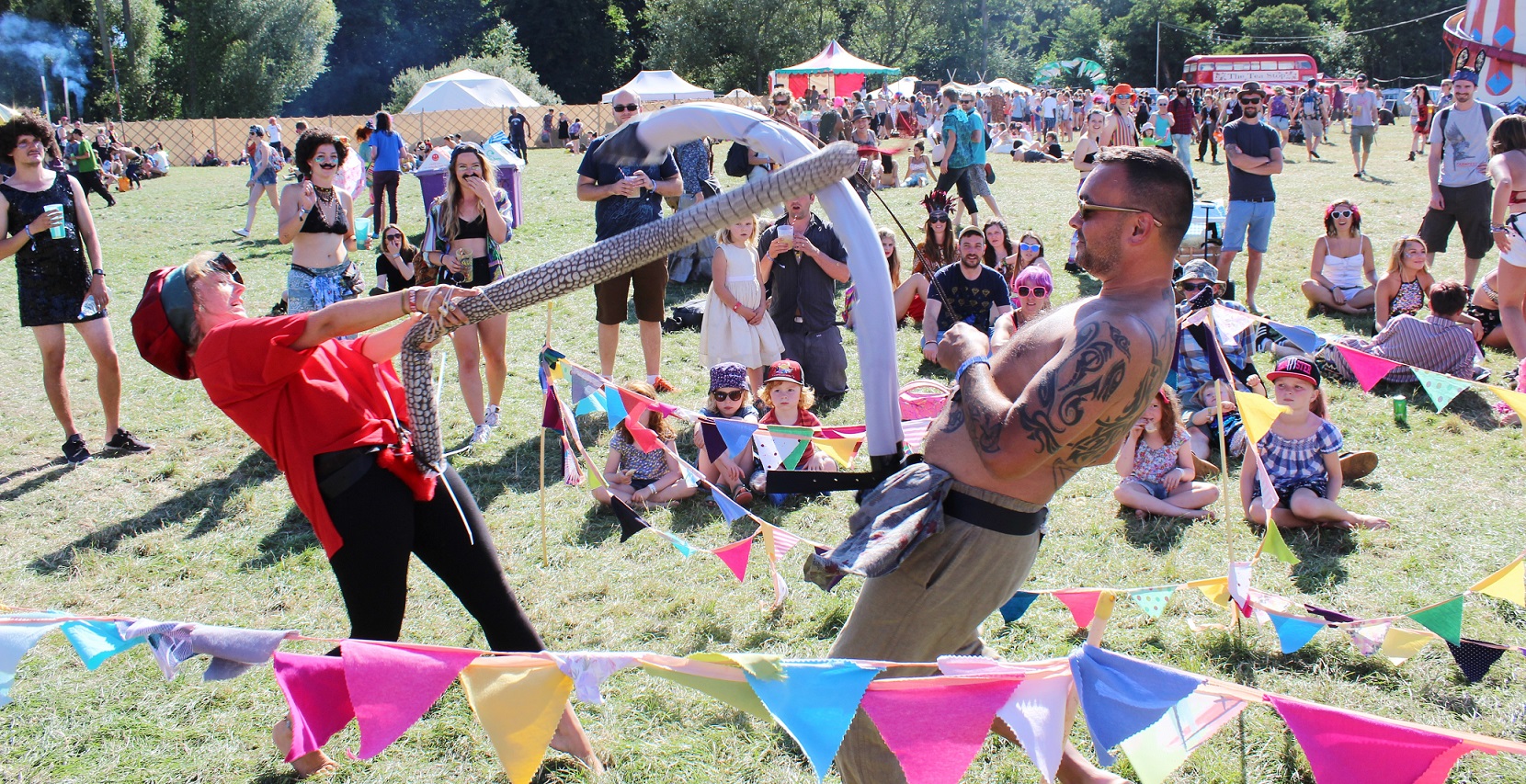
It’s decided to make a massed visitation to Chai Wallahs to catch Fela Kuti sidesman Dele Sosimi. This turns out to be a good choice to rev the engines up for Shambala’s last night. Sosimi was keyboard player for Kuti’s bands from the late Seventies onwards, until a few years before the Nigerian Afrobeat kingpin’s death. He stands centre stage at his keys and leads an eight-piece band through their paces. It’s Afrobeat which has been fine-tuned into something very jazzy, never becoming too over-excited, always emphasising the instrumental interweaving, with the brass section offering cheerful punctuation to proceedings, even when Sosimi is bemoaning “Money and power”.

But our destination is the Healing Meadows where the Voodoo Love Orchestra are playing. The journey there, over a bridge and up a hill, led by a member of our party with military bearing, is an adventure in itself, although we lose a few on the way. The venue is Koo Kou’s, a large yurt which can only be entered sans shoes. Inside it’s decorated with camo netting from which hang piñata geese. The band are introduced by a mumbling, charisma-free stoner who seems embarrassed to be there. It’s a common Shambala trait that the MCs - as in those who introduce the bands - seem somewhat self-conscious and unsuited to the job. This is of no matter, though, because The Voodoo Love Orchestra are full of energy and soon have multitudes up and dancing (except for some stupid hippies who insist on lying down throughout the whole set, looking meditative but taking up loads of room in this tiny venue).
The Voodoo Love Orchestra are from Brighton and create a melange of New Orleans wake music and spicier South American sounds. They’re led by a woman called Cicely Taylor who attacks a drum front-centre. The rest of the band are in red suits with white hearts all over, while she's in black with red hearts. Theirs is an infectiously frolicking party music, including a version of The Specials’ “Ghost Town” and the micro-venue, a short walk into the night from the rest of the action, seems to emphasise a sense of occasion.
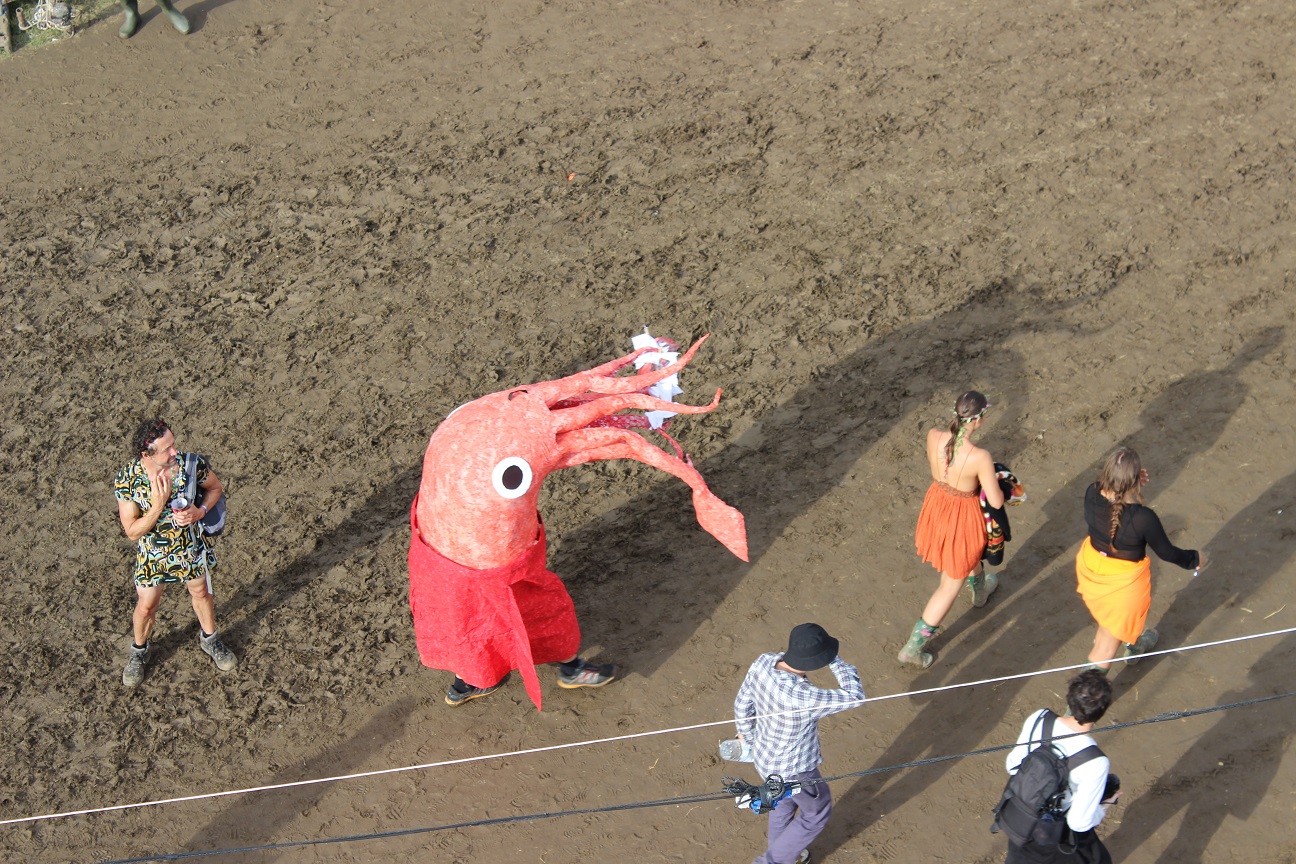
From there it’s onto the burlesque antics of an ill-attended post-midnight set by Urban Voodoo Machine. This long-standing outfit, led by one Paul-Ronney Angel, dress in red and black with Day of the Dead make-up, especially the freaky-looking green-painted drummer, and play music that combines elements of Gogol Bordello, Alabama 3 and Nick Cave, all filtered through a punk-ish sense of gypsy burlesque. Their audience is washed out but the band do their best to raise cheer. Given a more energized crowd, they’d likely rip the roof off but, as it is, they still deliver a raucous dose of good spirits.
From there it’s back to a pal’s RV in the camper van field where he sets the fire going and we sit around drinking Jack Daniels and rum and smoking tasty, fudgy hash. There’s a man at the table who used to organize the Sunrise raves with Tony Colston-Hayter back in the day. This is a fine claim to a spot in the furnace of social history, in my book, although it’s mentioned in passing rather than expanded upon. The clock ticks and Monday creeps nearer. When the conversation turns, for reasons that remain unclear to me, to Prince Charles’s role in Britain’s politics, it’s time to go.
A few hours later I will be woken at 7.30 AM by a group of younglings going on and on and on about “losing Tamara on acid for, like, hours”. It is an unwelcome, if appropriate way to conclude a festival that’s feisty, funky and generally appetizing.

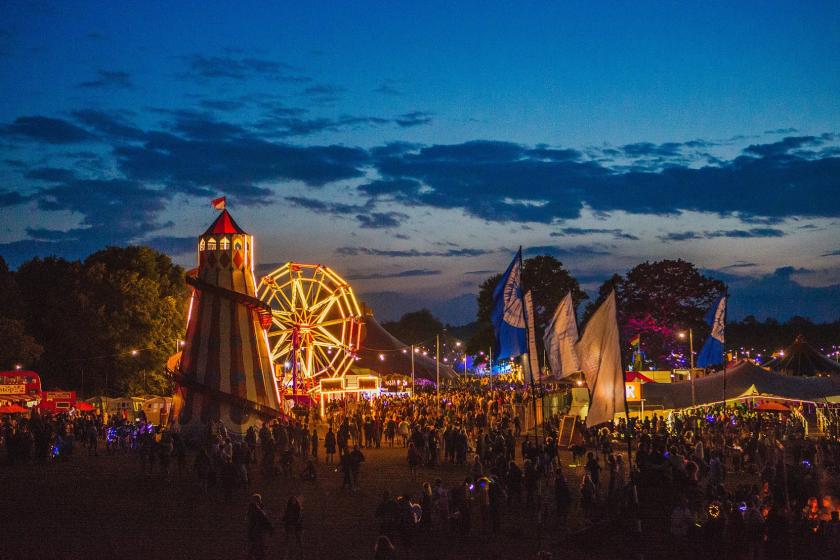













Add comment